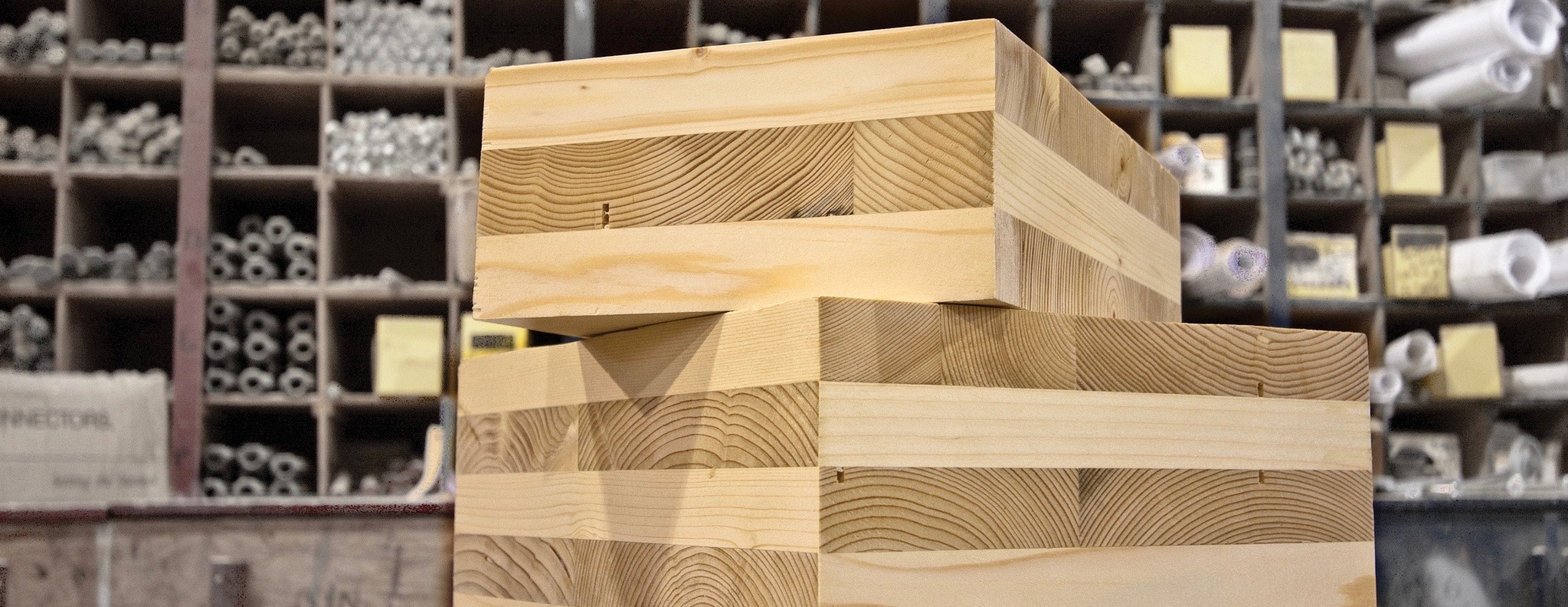
The Hidden Carbon Benefits of Cross Laminated Timber
Mik McKee, The Climate Trust
As published by TriplePundit – March 21, 2016
A new, engineered forest product called Cross Laminated Timber (CLT) has been a hot topic in the Oregon news lately. For those of you who missed it, CLT is a solid wood panel that is made by layering dimensional lumber boards in alternating directions, and bonding them together with structural adhesive. The combination of alternating fiber and solid composition make CLT both lightweight and strong, and it has excellent fire and seismic attributes as well.
However, what has many Oregonians most excited is the potential for this new forest product to inject some much needed energy into the timber economy. Just last week, Oregon Public Broadcasting produced a piece about a new office building, called Albina Yard, which is being constructed out of CLT in northeast Portland. According to OPB Radio, both Senators Merkley and Wyden strongly support efforts to advance the manufacturing and use of CLT, and have worked to secure a $120,000 economic development grant to that end.
Similarly, in September the Oregonian ran a story about Secretary of Agriculture Tom Vilsack awarding $1.5 million to support the development of a 12-story mixed-use building constructed primarily of CLT in Portland’s Pearl District. The Framework Building, which was conceived of in partnership between Beneficial State Bancorp, Home Forward, and LEVER Architecture, is expected to be one of the first tall timber structures in the country.
While both of these pieces touched on the fact that CLT is a sustainable building product that can help mitigate climate change, there is opportunity to expand on this particular attribute.
As Oregonians, most of us understand that wood from sustainably managed forests is a renewable resource. What may be less understood is that building with sustainably harvested wood results in a significant amount of avoided greenhouse gas emissions. This is because the energy and raw material intensive production of conventional building materials, primarily concrete and steel, requires a massive amount of energy. According to the EPA’s Inventory of U.S. Greenhouse Gas Emissions and Sinks: 1990 – 2013, carbon dioxide (CO2) emitted from iron, steel, and cement production are the first and second largest sources of industrial CO2 emissions in the U.S.
Harvesting and manufacturing wood products, on the other hand, requires much less energy. When compared side by side, the carbon emitted to produce a ton of concrete is roughly 8 times that emitted to produce a ton of framing lumber. A similar comparison of wood versus steel from the same report indicates that steel production emits about 21 times as much carbon as an equal weight of framing lumber.
Harvested wood products also act as a substantial carbon reservoir, and wood used in construction sequesters carbon for the life of the building. While this carbon pool is admittedly temporally shorter than many Pacific Northwest Forests, it is important to recognize that in 2001 about 680 million tons of carbon was stored in the nation’s housing stock.
When all factored together, building with sustainably harvested wood may actually offset greenhouse gas emissions. A paper published in Environmental Science and Technology examined 21 international studies and found that, on average, each ton of carbon in wood products used in place of non-wood products reduces greenhouse gas emissions by 2.1 tons of carbon (Sathre & O’Connor, 2010). If you plug this number into the EPA’s Greenhouse Gas Equivalencies Calculator, this is equal to removing 1.5 passenger vehicles from the road for one year, or preventing 7,503 pounds of coal from being burned.
While it is still too early to know with certainty how many tons of wood will be used in the construction of framework, it is safe to say LEVER Architecture’s innovative building will be able to demonstrate a rather impressive climate benefit. Extrapolate this out over multiple CLT constructed buildings in cities throughout the Unites States, and the greenhouse gas reductions become quite significant.